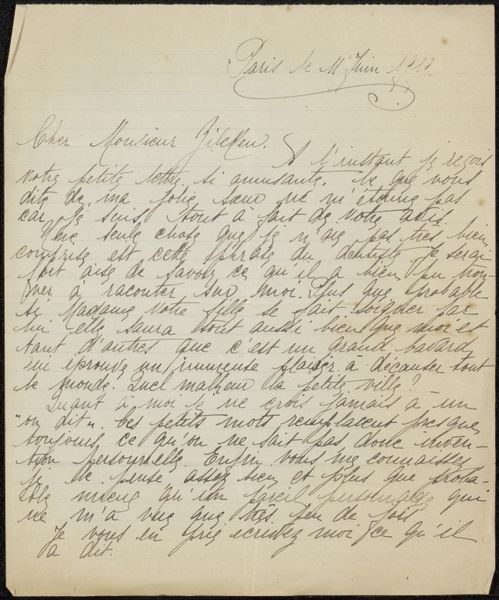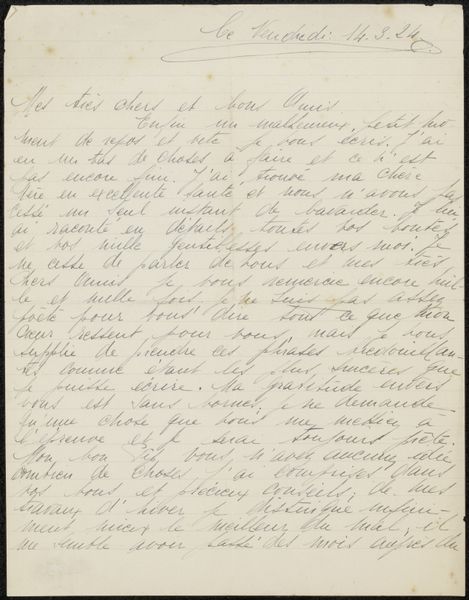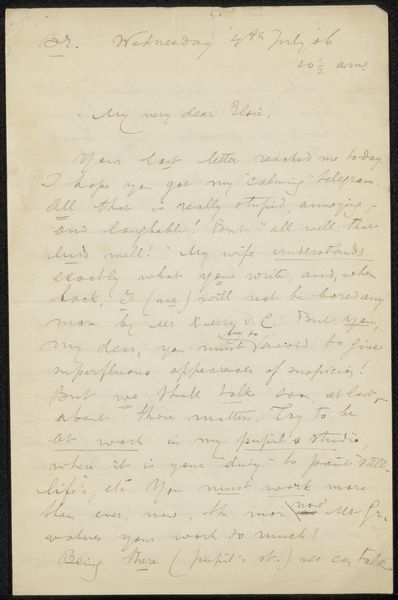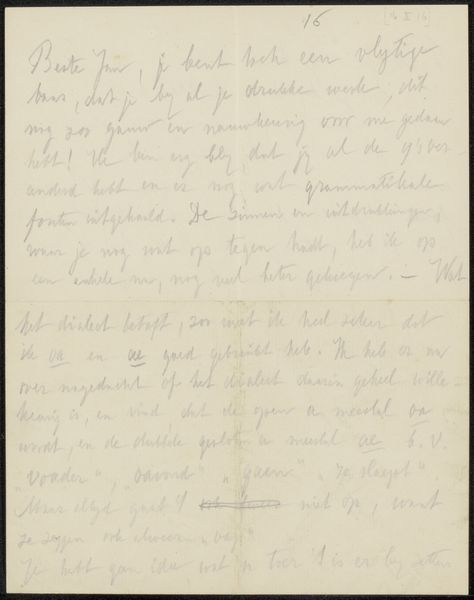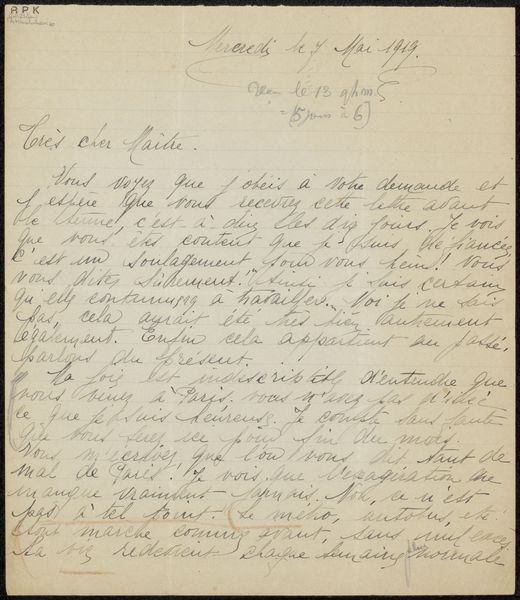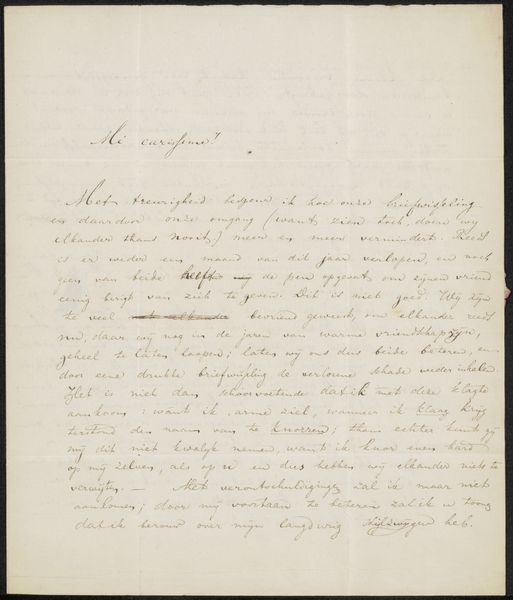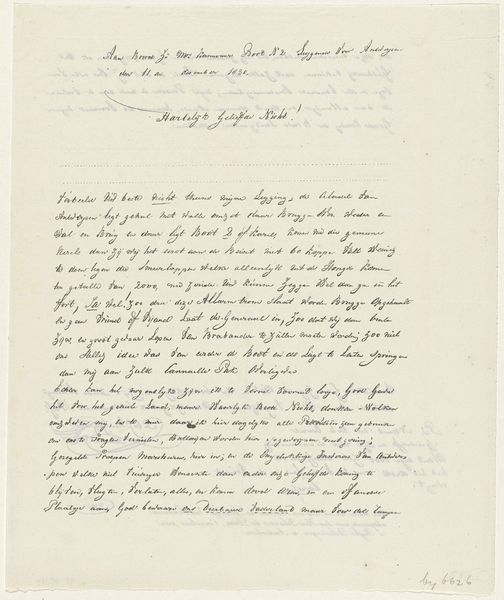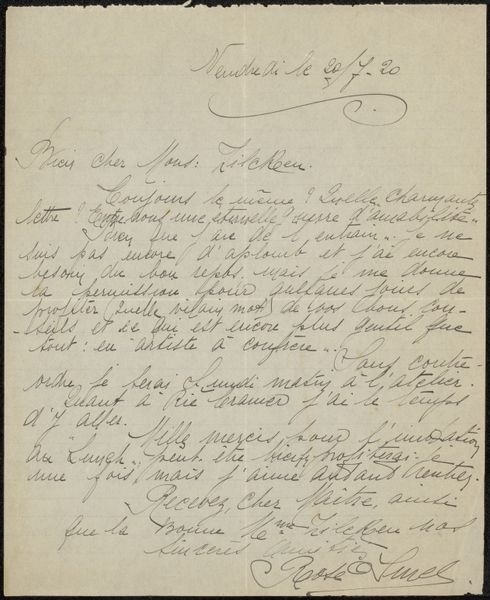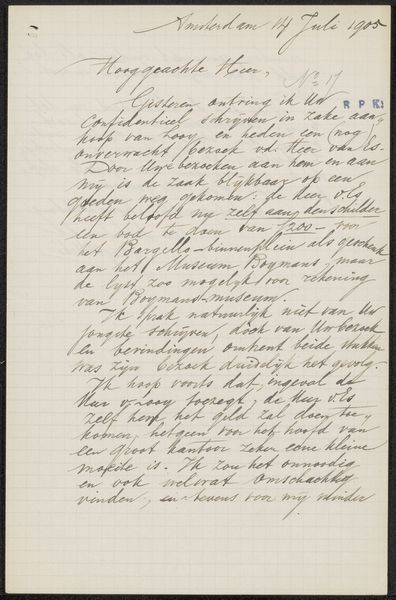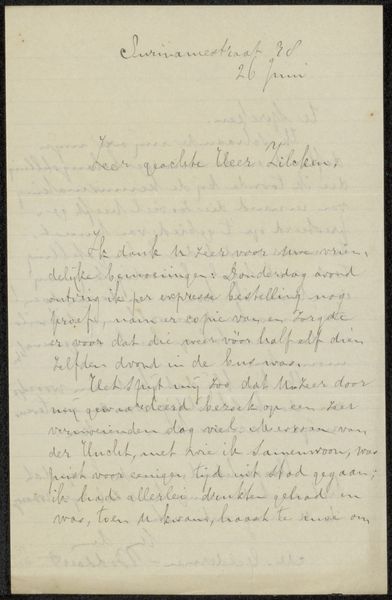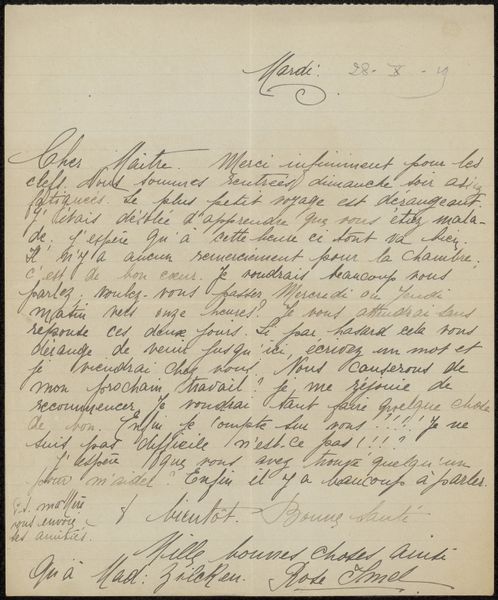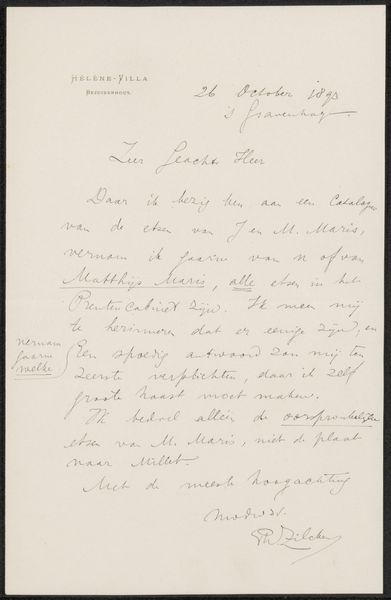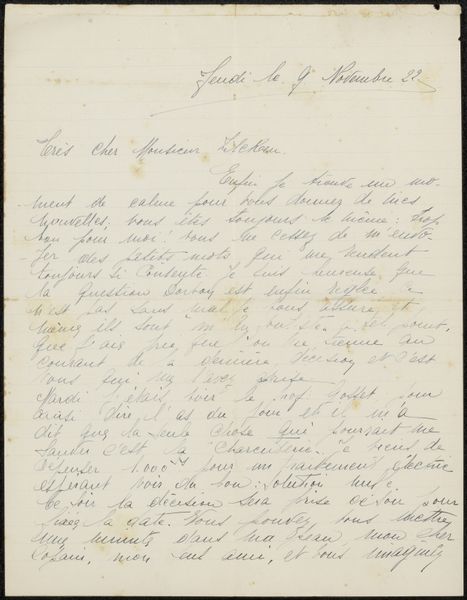
drawing, paper, ink
#
portrait
#
drawing
#
type repetition
#
hand-lettering
#
hand drawn type
#
hand lettering
#
paper
#
ink
#
fading type
#
stylized text
#
thick font
#
handwritten font
#
golden font
#
modernism
#
historical font
#
calligraphy
Dimensions: height 25.5 cm, width 20.6 cm
Copyright: Rijks Museum: Open Domain
Curator: This is a fascinating piece. Editor: It’s a handwritten letter from around 1960, titled "Brief over schelpenportret aan Willem Drees," or "Letter about shell portrait to Willem Drees" by W.M. Voois. It appears to be ink on paper. I’m struck by the intimate, almost folksy feel of the handwritten script. How would you interpret its cultural significance? Curator: I think that what stands out most to me, particularly within its historical context, is the deliberate act of human connection. The tactile quality of the handwritten letter speaks to a slower, more deliberate mode of communication, resisting the encroaching tide of impersonal, mass-produced forms of exchange that were becoming increasingly prevalent at that time. Editor: That’s interesting. The letter feels very personal, addressed to someone important. Curator: Absolutely. And who was Willem Drees in the Dutch political landscape? Think about the post-war period and the social-democratic ideals he championed. Editor: He was Prime Minister, a major figure in rebuilding the Netherlands. So this letter, perhaps seeking recognition or support, positions itself within those larger social and political dialogues. Curator: Precisely. The materiality of the letter itself – the ink, the paper, the handwriting – embodies a form of resistance against the erasure of individual voices within a rapidly changing, increasingly bureaucratized society. Don't you think? Editor: I see what you mean. The letter isn’t just about the content, but about asserting a human presence in a world moving towards automation and mass production. Curator: Exactly. By analyzing the letter's visual and textual elements through an intersectional lens, we gain insights into the dynamics of power, identity, and resistance. Editor: I never would have thought about a letter this way, considering the politics of handwriting and materiality. Curator: These mundane objects often conceal the most potent reflections of cultural identity.
Comments
No comments
Be the first to comment and join the conversation on the ultimate creative platform.
